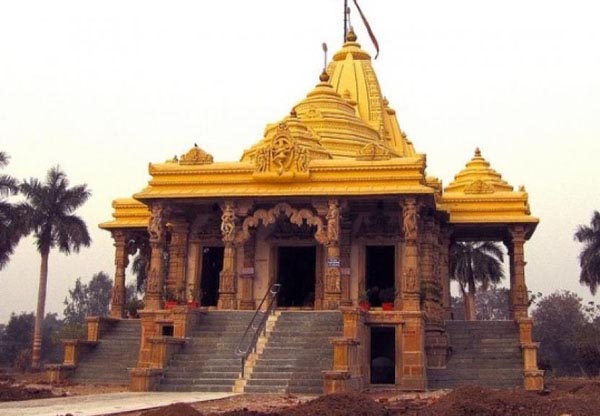Kayavarohan Shiv Temple

Information of Kayavarohan Shiv Temple, Vadodara, Gujarat
Kayavarohan Temple is one of the 68 pilgrimages of god Shiv as stated in Shiv Puran. Nevertheless, Kayavarohan Temple is not considered as among the 12 Jyotirlingas. Still, Kayavarohan Temple has great significance for the religious followers of Lakulish, the 28th incarnation of lord Shiv. Kayavarohan Temple is the place where lord Shiv was reincarnated as Lakulish which factually signify decent of the form. It is situated in Vadodara district of Gujarat.
Kayavarohan Shiv Temple Religious Significance
It is believed that lord Shiv have given a new lease of life to Kayavarohan Temple. He gave up his body and entered the jyotirlinga which was sanctified by sage Bishwamitra. The form of lord Shiv's body is still epitomised in the temple at present. The Shiv Linga in Kayavarohan Temple signifies a formless but exclusive and extraordinary iconic form of lord Shiv, bearing the image of an arbitrating yogi.
Shivratri is the most popular festival in Kayavarohan Temple. On this sacred occasion, thousands of male devotees wear the dress of lord Shiv and worship in the temple. Apart from religious centre, Kayavarohan Temple is also a learning centre where many students come to learn regarding life. Furthermore, Kayavarohan Temple also provides learning on yoga. There is an underground meditation cave in Kayavarohan Temple which is used for seclusion and meditation purposes.
Kayavarohan Shiv Temple Mythology & History
There is an interesting legend which is related with the creation of Kayavarohan Temple. In Shiv Puran, it is stated that the popular sage Bishwamitra was frustrated when gods did not permit his disciple Trishanku to enter into heaven. Thus, Bishwamitra abandoned the ashram and begun wandering. He rambled and arrive close to a small town named Kayavarohan. After entering the town, he felt an exclusive spiritual rise. He felt greatly ecstatic and was stimulated to a city of liberty which can become a new entrance to heaven. He called Ganga and requested her to flow in Kayavarohan town. With the strength of his austerity, Bishwamitra established a new immersing tank that brought liberty. He also installed Jyotirlinga and sanctified it. Kayavarohan city soon become quite popular that gods started to feel jealous of it.
Up to now, Kashi was the only entrance to heaven and gods took praise for giving it to manhood. However, with the creation of new entrance, gods could not face such a disappointment. Gods hurried to bring a report regarding the achievement of Bishwamitra. Accordingly, it has been observed that Kayavarohan has its own spiritual splendour. Gods soon realised that Kashi will stood no chance against the new entrance of heaven. Hence, gods become so frightened and rushed to lord Vishnu. Later, lord Vishnu, did not accepted his endeavour and therefore Kayavarohan did not become another entrance of heaven. It is believed that it was sage Bishwamitra who installed Shiv Linga in Kayavarohan through the period of Lord Ram which later become Kayavarohan Temple. There is a myth that throughout the assault of Barbarian king Mahmood, the glowing jyotirlinga with the statue of Lakulish fused with the light of 12 other jyotirlingas and vanished.
Kayavarohan Shiv Temple Architectural Significance
Kayavarohan Temple and its surrounding areas has great archaeological significance. The temple is similarly sacred as temple in Kashi. Various ancient statues and remnants from 2nd century have been recovered from this temple. In later days, Kayavarohan Temple was destroyed by Muslim intruder Mahmud. Nevertheless, the Shiv Linga still remained in the temple. Kayavarohan Temple was recreated throughout late 20th century. Nowadays, various Hindu divinities can be observed in the temple. It is also regarded as a great heritage location by the Archaeological Survey of India.
- Andhra Pradesh Temples
- Assam Temples
- Bihar Temples
- New Delhi Temples
- Goa Temples
- Gujarat Temples
- Jammu and Kashmir Temples
- Karnataka Temples
- Kerala Temples
- Madhya Pradesh Temples
- Maharashtra Temples
- Odisha Temples
- Punjab Temples
- Rajasthan Temples
- Sikkim Temples
- Tamil Nadu Temples
- Telangana Temples
- Uttar Pradesh Temples
- Uttarakhand Temples
- West Bengal Temples